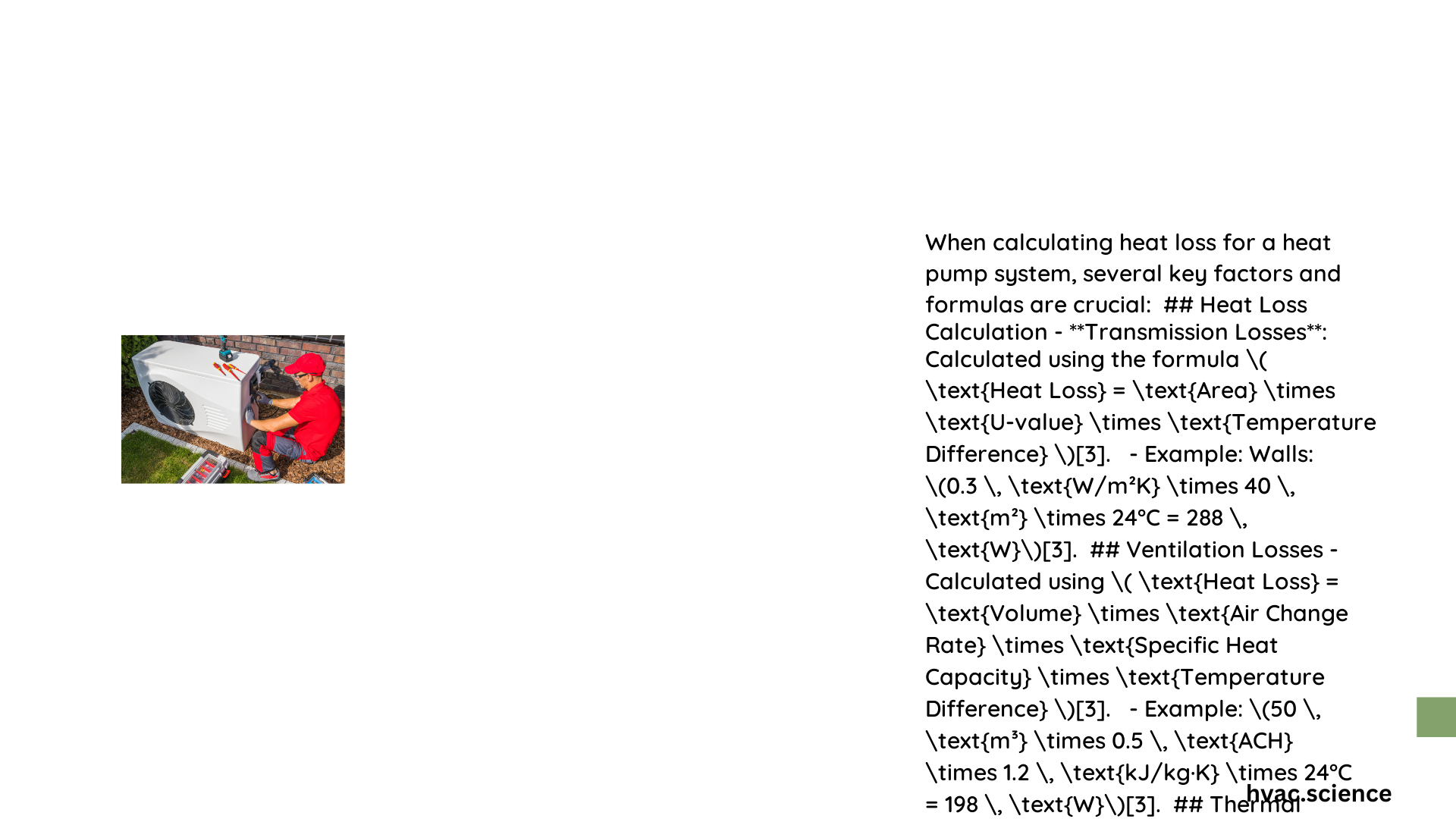Heat pump heat loss represents a critical metric in understanding thermal system performance, involving complex calculations that determine energy efficiency, system sizing, and overall heating effectiveness. Homeowners and HVAC professionals must comprehensively analyze temperature differentials, building envelope characteristics, and thermal resistance to minimize energy waste and optimize heat pump functionality across diverse environmental conditions.
What Causes Heat Pump Heat Loss?
Heat pump heat loss occurs through multiple pathways in residential structures, including:
Thermal Transfer Mechanisms
- Wall Heat Transfer
- Conduction through building materials
- Insulation quality
-
Wall construction type
-
Window and Door Thermal Leakage
- Glass surface area
- Seal integrity
- Frame material conductivity
Quantitative Analysis of Heat Loss
Temperature Differential Calculations
The fundamental heat loss formula provides critical insights:
[
Q = U \times A \times \Delta T
]
Where:
– ( Q ): Total hourly heat loss (BTUs/hr)
– ( U ): Overall heat-transfer coefficient
– ( A ): Surface area
– ( \Delta T ): Temperature difference
| Component | Typical U-Value | Impact on Heat Loss |
|---|---|---|
| Walls | 0.05-0.10 | Moderate |
| Windows | 0.30-0.65 | High |
| Ceiling | 0.03-0.05 | Low |
| Doors | 0.20-0.40 | Moderate |
How Do Insulation Types Affect Heat Pump Performance?
Comparative Insulation Strategies
- Fiberglass Insulation
- R-13 value
- Moderate thermal resistance
-
Cost-effective solution
-
Spray Foam Insulation
- R-38 value
- Superior thermal barrier
- Minimizes air infiltration
What Factors Influence Heat Pump Heat Loss?
Critical Determinants
- Climate zone
- Building square footage
- Construction materials
- Air infiltration rates
- Duct system configuration
Calculation Example: Residential Heat Loss
Scenario Parameters:
– Home size: 2,000 sq ft
– Outdoor design temperature: 40°F
– Indoor desired temperature: 68°F
Calculation Steps:
1. Calculate temperature differential (ΔT = 28°F)
2. Determine component U-values
3. Compute individual heat loss rates
4. Aggregate total system heat loss
Strategies to Minimize Heat Pump Heat Loss
Optimization Techniques
- Enhance building insulation
- Seal air leakage points
- Install high-performance windows
- Regular HVAC maintenance
- Use programmable thermostats
Advanced Considerations
Technological Interventions
- Smart zoning systems
- Variable-speed heat pumps
- Advanced thermal imaging diagnostics
- Predictive maintenance algorithms
Conclusion

Understanding heat pump heat loss requires a multifaceted approach combining scientific calculation, material science, and strategic system design. Professionals and homeowners can significantly improve energy efficiency by implementing comprehensive thermal management strategies.
